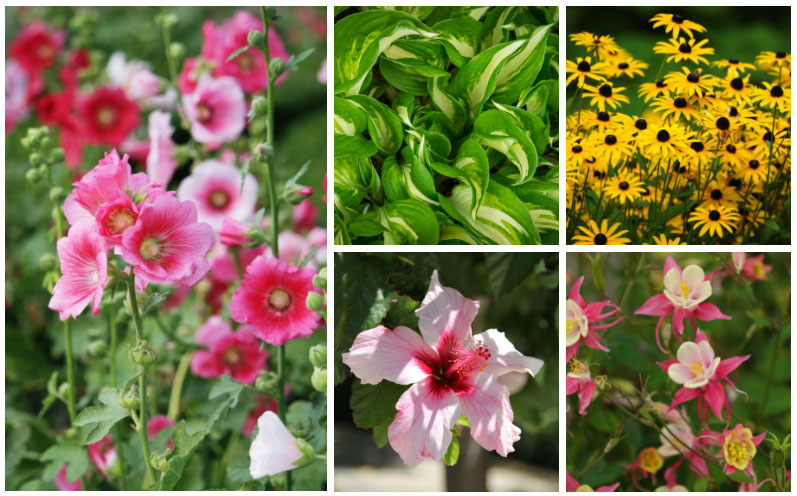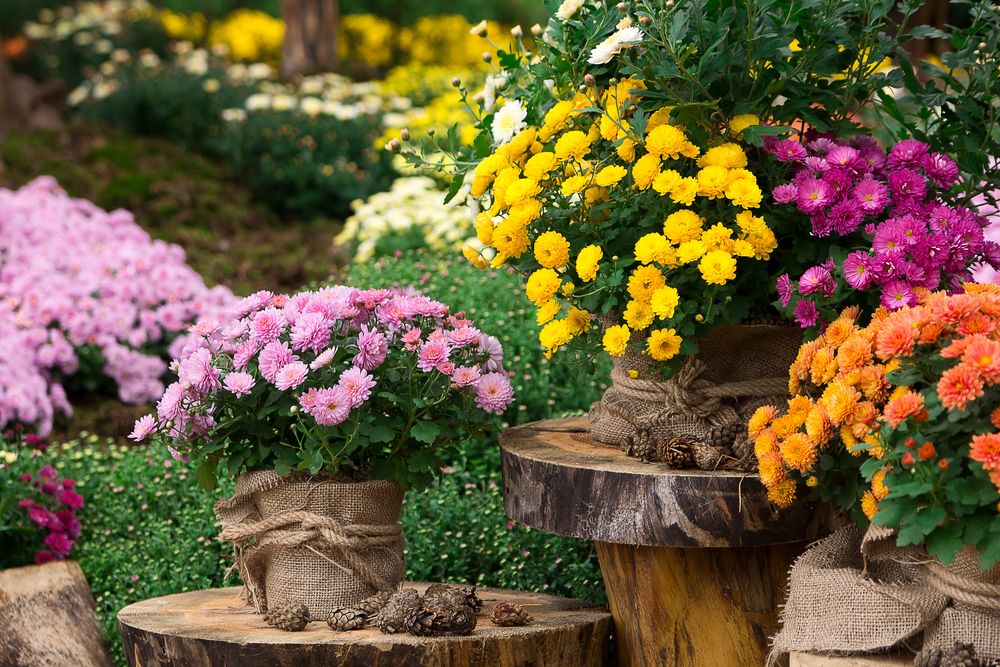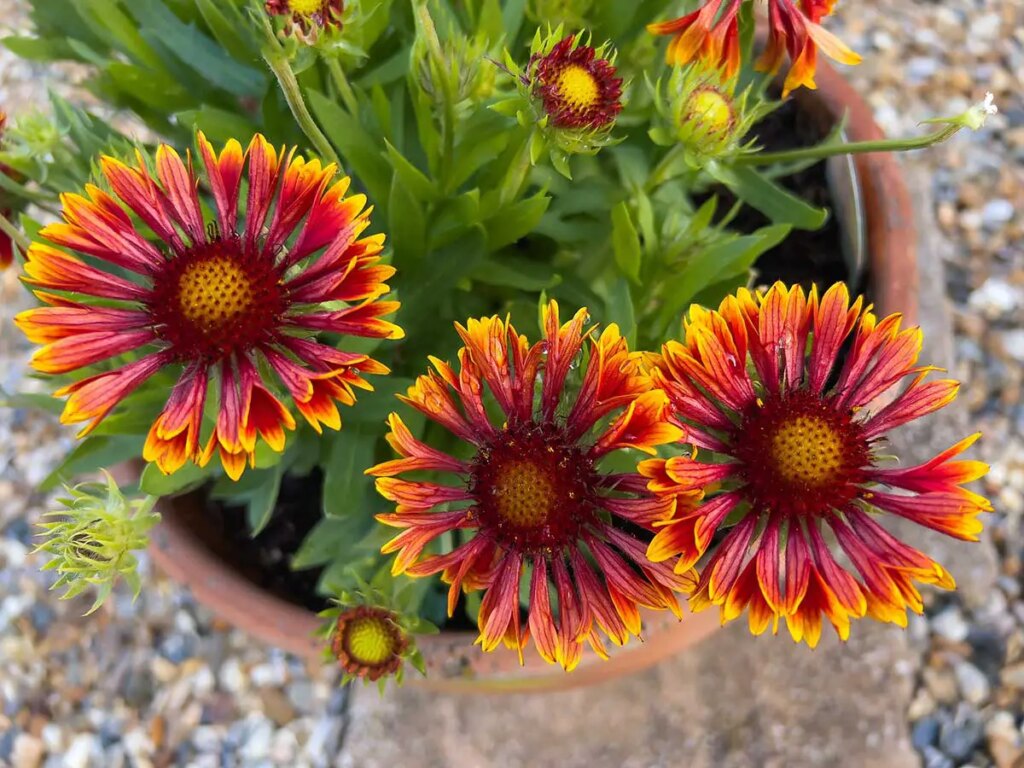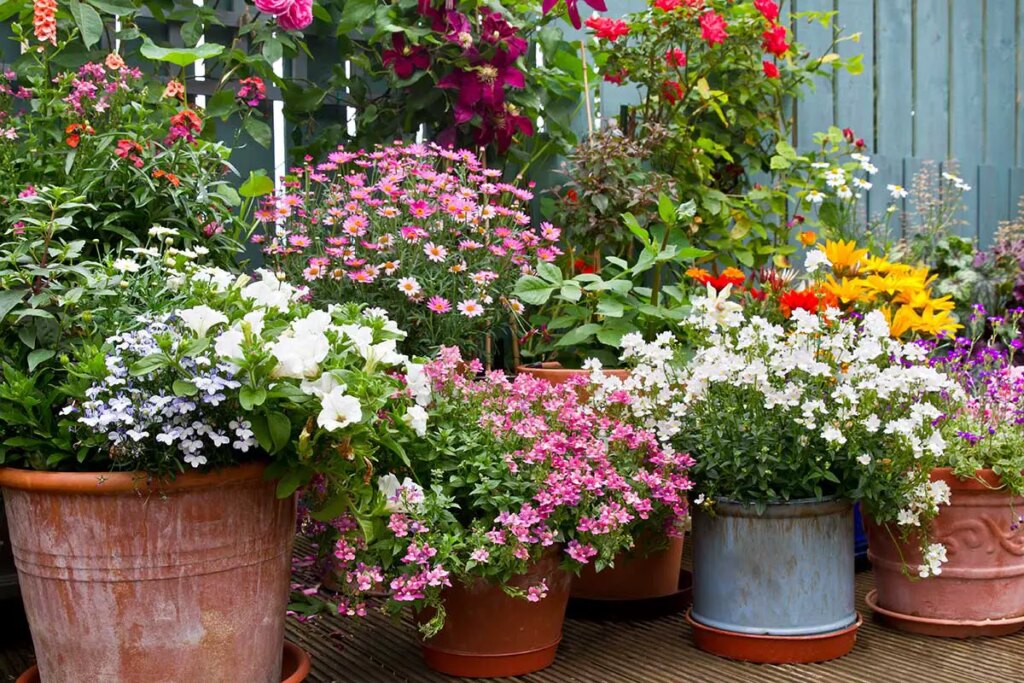
Container gardening is a fantastic way to grow your favorite plants, even when you’re short on space. It provides versatility, portability, and endless design options. Whether you have a small balcony, a cozy patio, or a sprawling deck, container gardens can add color, texture, and life to your outdoor spaces. But, like any gardening method, it’s not without its potential pitfalls.
As you venture into the world of container gardening, you may encounter some common mistakes that can dampen your green thumb’s success. Fear not, you’re not alone! Many new and experienced gardeners alike face these challenges.
By becoming aware of these frequent errors, you’ll be able to dodge them and grow a thriving, vibrant container garden that brings joy and satisfaction for seasons to come.
In this article, we’ll explore 9 common container garden mistakes and the best practices to avoid them – enlightening you on the right path to lush and healthy plants.
Armed with this knowledge, you’ll be well on your way to creating the container garden of your dreams.
1. Choosing the Right Containers
Size Matters
When it comes to container gardening, the size of your container is crucial. Choosing a container that is too small can stunt the growth of your plants, while one that is too large may lead to over-watering. Consider the mature size of your plants and their root systems when selecting your containers. For example:
- Small plants (herbs, lettuce): 6-12 inches in diameter
- Medium plants (tomatoes, peppers): 12-18 inches in diameter
- Large plants (squash, melons): 18-24 inches in diameter
Materials
Containers come in a variety of materials, each with their own benefits and drawbacks. Some popular options include:
- Plastic: Lightweight, inexpensive, and retains moisture well. However, it can degrade over time and may not be as aesthetically pleasing as other options.
- Ceramic: Beautiful and sturdy, but heavy and may break easily if dropped. Be mindful of freezing temperatures, as ceramic pots can crack in cold conditions.
- Terracotta: Porous and provides excellent drainage, but can dry out quickly and may require more frequent watering. Also, it can be heavy and susceptible to cracking in freezing temperatures.
- Wood: Natural and provides insulation for plant roots. However, it can rot over time and may not be suitable for long-term use.
Choose the material that best suits your needs and the specific requirements of your plants.
Drainage
Proper drainage is essential for healthy container plants. When selecting your containers, make sure they have adequate drainage holes. Without proper drainage, water will not be able to escape, leading to root rot and other issues. If your container doesn’t have drainage holes, you can create your own by drilling small holes at the bottom. Also, consider placing a layer of rocks or broken potshards at the bottom of the container to help with drainage and prevent soil from spilling out of the holes.
2. Selecting Appropriate Soil
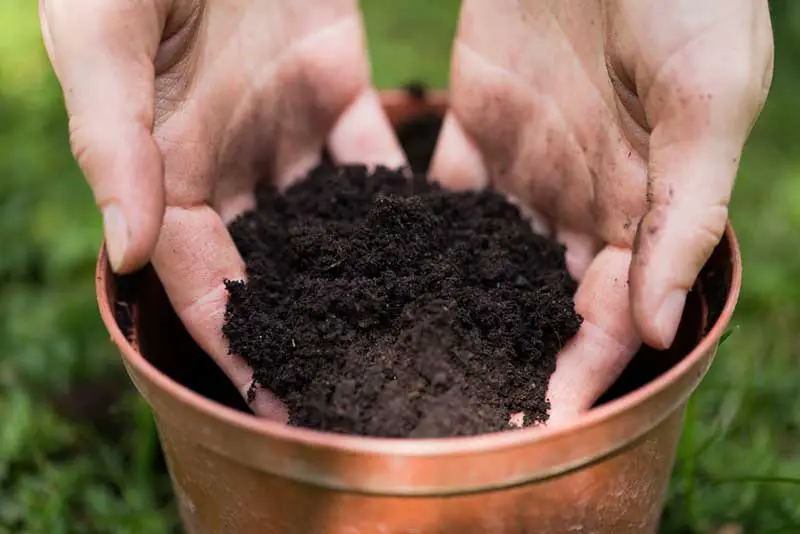
Avoid Garden Soil
When starting your container garden, it’s important to avoid using garden soil. Although it may seem like a convenient and cost-effective option, garden soil can be too heavy and compact for container gardening. It can restrict proper air circulation and water drainage, leading to poor root growth and plant health.
Furthermore, garden soil can introduce diseases and pests to your potted plants. Since your container garden may not have natural predators that control these pests, they can quickly take over and damage your plants.
Consider Soilless Mixes
A better alternative for container gardening is soilless mixes. These mixes are lightweight and well-draining, ensuring adequate air circulation and water drainage for your plants. They are also free of pests and diseases, ensuring that your creations remain healthy and vibrant.
When choosing a soilless mix, look for those that include:
- Peat moss or coconut coir: These provide water retention while ensuring proper drainage.
- Perlite or vermiculite: They improve aeration and drainage, promoting healthy root growth.
- Slow-release fertilizers: These help to provide essential nutrients to your plants over time.
By selecting the appropriate soil for your container garden, you’ll be setting your plants up for success. Remember to avoid using garden soil, and consider soilless mixes to provide the best possible environment for your plants to flourish.
3. Plant Selection and Compatibility

Research Requirements
Before starting your container garden, it’s important to research the specific requirements of the plants you want to grow. This will help you select plants that are well-suited for container gardening and will thrive in your particular environment. Some factors to consider when selecting plants include:
- Light requirements (full sun, partial shade, etc)
- Water preferences (drought-tolerant, moisture-loving, etc)
- Temperature ranges (hardiness zones)
- Soil preferences (well-draining, acidic, etc)
It’s a good idea to consult reference materials or speak with knowledgeable gardeners to get a better understanding of the specific requirements for each plant you are interested in growing.
Mixing Conflicting Plant Needs
When creating your container garden, avoid planting incompatible plants together. Certain plant pairings may compete for resources, hinder growth, or create unhealthy environments for one another. Keep in mind the following tips when grouping plants together in containers:
- Match plants with similar water requirements, as overwatering or underwatering can severely impact plant health.
- Pair plants with similar light needs, ensuring that your container garden can provide the appropriate amount of sunlight for each type of plant.
- Group plants that share similar soil preferences, as altering the soil composition to accommodate one type of plant may negatively impact the others.
- Be mindful of root competition, especially if planting larger, fast-growing plants alongside smaller, slower-growing ones.
By carefully considering the specific needs of each plant, your container garden should flourish and provide you with a beautiful and productive space.
4. Watering Practices
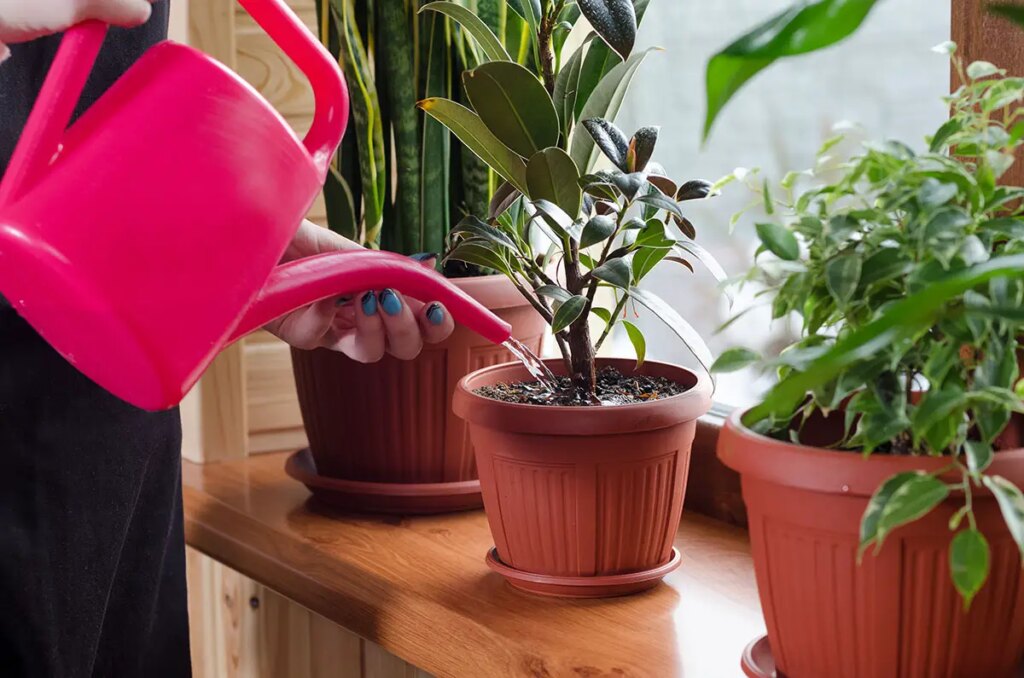
Overwatering
One common mistake you might make in container gardening is overwatering your plants. This can lead to root rot, diminished growth, and even the death of your plants. To avoid overwatering, make sure to:
- Check the moisture level of the soil before watering. You can do this by sticking your finger into the soil about an inch deep. If it feels moist, hold off on watering.
- Use well-draining soil in your containers to prevent water from pooling around plant roots. A proper soil mix will allow excess water to drain away quickly.
- Watch for signs of overwatering, such as yellowing leaves and wilting, even if the soil is wet. This indicates that the plant is not receiving enough oxygen due to waterlogged roots.
Underwatering
On the other hand, underwatering can also be detrimental to your container garden. Plants that don’t receive enough water may become stunted, have a reduced yield, or even die. To ensure you’re giving your plants adequate hydration, try these tips:
- Create a consistent watering schedule. This will help you stay on track and prevent you from unintentionally neglecting your plants’ water needs.
- Adjust your watering routine based on the season and daily weather conditions. Hot, sunny days will require more frequent watering, while cooler, cloudy days may require less.
- Know your plants’ specific needs. Different plants have varying water requirements, so take the time to research the ideal watering practices for each type of plant in your container garden.
By paying attention to your watering practices and tailoring them to your plants’ needs, you’ll be well on your way to a thriving container garden.
5. Fertilization and Nutrition
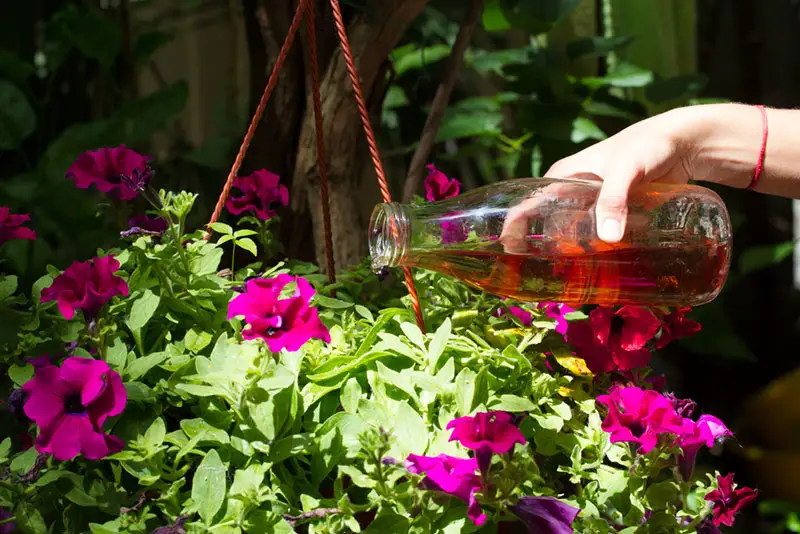
Overfertilization
It’s easy to think that more fertilizer equals healthier plants, but overfertilization can actually harm your container garden. Excessive nutrients can cause root burn, yellowing leaves, and even plant death. Here’s how to avoid overfertilizing:
- Always follow the product’s instructions for the correct amount and frequency of application.
- Use a slow-release or organic fertilizer, which is less likely to cause harm to your plants.
- Pay attention to your plants’ growth and appearance, as they can provide clues if they are being overfed.
Nutrient Balance
Achieving the right balance of nutrients is crucial for the health and growth of your container garden. Different plants have different nutrient needs, so it’s important to tailor your fertilization plan to each variety. Maintain a proper nutrient balance by:
- Using a well-balanced, complete fertilizer that contains the right proportions of essential nutrients (nitrogen, phosphorus, potassium) for the plants you’re growing.
- Ensuring that your potting mix includes essential micronutrients as well, such as calcium, magnesium, and iron.
- Observing your plants for signs of nutrient deficiencies, such as stunted growth, yellow leaves, or poor fruit production. Adjust your fertilization plan accordingly.
6. Proper Sunlight Exposure
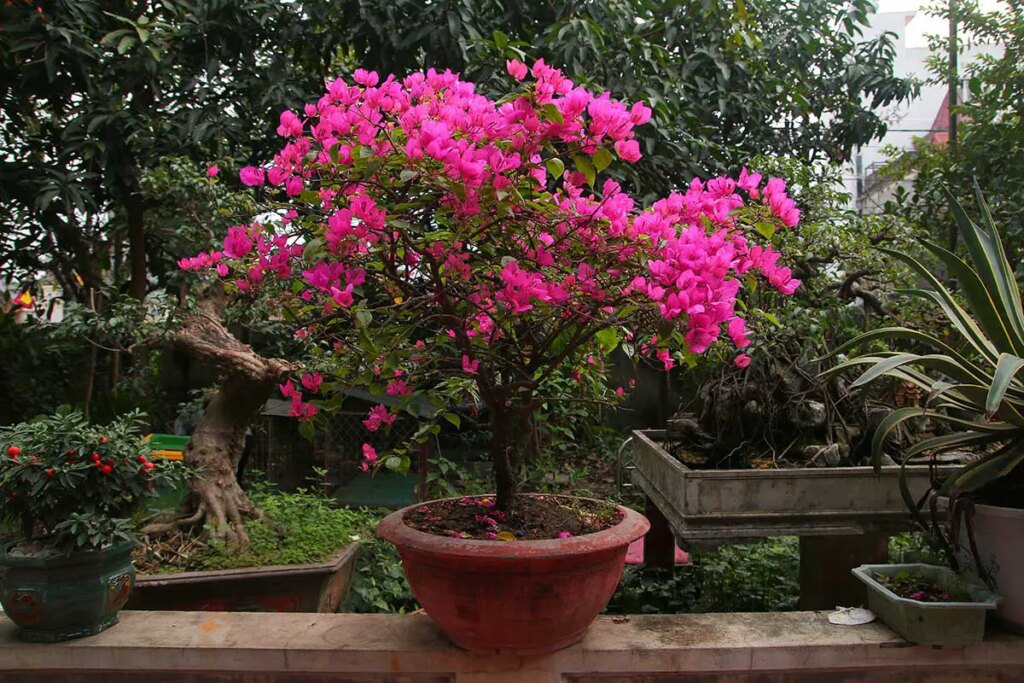
When planning your container garden, it’s important to consider the sunlight exposure your plants will need. In this section, we’ll discuss the importance of choosing the right plants for your garden and the effects of limited sunlight on their growth.
Shade-Loving and Sun-Tolerant Plants
As you select plants for your container garden, keep in mind that not all plants have the same sunlight requirements. Some plants are shade-loving, while others are sun-tolerant. To ensure your garden thrives, match the sunlight exposure of your space with the plants’ needs. Here’s a brief overview:
- Shade-loving plants often prefer indirect light or only a few hours of direct sunlight per day. Examples include ferns, hostas, and impatiens.
- Sun-tolerant plants typically need at least 6 hours of direct sunlight each day to grow and produce well. Some examples are tomatoes, petunias, and marigolds.
By knowing your garden’s sunlight exposure and choosing plants that align with those conditions, you can create a balanced and healthy container garden.
Effects of Limited Sunlight
Limited sunlight can have various effects on your container garden plants. Without enough light, plants may struggle to grow, produce fewer flowers, or have leggy growth. Here are some common consequences of limited sunlight:
- Decreased growth: Plants need sunlight for photosynthesis. Without enough light, they cannot produce the energy needed for growth, leading to a lack of vigor and smaller size.
- Reduced flowering and fruiting: Less sunlight means less energy for the plant, resulting in fewer flowers and fruits. This may be especially problematic for plants grown for their blooms or harvest.
- Leggy growth: In search of sunlight, plants may grow long, thin stems with fewer leaves, leading to a less aesthetically pleasing appearance.
When planning your container garden, consider the available sunlight, and choose plants that will thrive in those conditions. By providing the proper sunlight exposure, you can help your plants grow strong, produce abundant blooms or fruits, and create an attractive, harmonious garden.
7. Pest and Disease Control
Organic Practices
In your container garden, it’s important to implement organic practices for pest and disease control. This includes using eco-friendly methods such as:
- Introducing beneficial insects, like ladybugs and lacewings, to deter harmful pests
- Using organic, chemical-free pesticides when necessary
- Regularly inspecting your plants for signs of infestations or diseases
By maintaining a well-balanced ecosystem, you’ll promote a healthier container garden environment that can combat pests and diseases naturally.
Common Pests and Diseases
Despite your best efforts, you may still encounter common pests and diseases in your container garden. Some of these include:
Aphids: These tiny, sap-sucking insects can cause leaves to curl and yellow. To combat aphids, spray them with soapy water, use biological controls, or introduce natural predators like ladybugs.
Spider Mites: These tiny mites can cause stippled, yellow leaves and may even produce webbing. To manage spider mites, spray the affected plants with water, use insecticidal soap, or introduce predatory insects like lacewings.
Fungal Diseases: Overwatering or poor air circulation can lead to fungal diseases like powdery mildew and root rot. Prevent these by controlling watering habits, providing proper drainage, and increasing air circulation around your plants.
Remember to regularly monitor your container garden and promptly address any signs of pests or diseases to keep your plants healthy and thriving.
8. Pruning and Maintenance

Deadheading
Deadheading is essential in container gardens. It’s the process of removing faded or dead flowers to encourage new blooms and maintain a neat appearance. Regularly inspect your plants and gently pinch off any spent flowers. Doing this not only keeps your plants looking fresh but also prevents them from using energy on seed production.
Proper Pruning Techniques
Pruning is vital for the health and growth of your container plants. Here are some tips to keep in mind while pruning:
- Inspect: Check your plants regularly for any damaged or diseased parts. Remove them promptly to prevent the spread of diseases and pests.
- Timing: The best time to prune most plants is during their dormant period, typically in late fall or early winter. However, it’s essential to know the specific pruning needs of your plants, as some may require pruning at different times of the year.
- Tools: Use clean and sharp tools for pruning. This will help make clean cuts and reduce the risk of infections.
- Technique: Never cut close to the main stem or trunk. Make sure to leave a small stub, so the wound can heal properly. Cut at a 45-degree angle, encouraging water to run off and minimizing the risk of disease.
- Moderation: Don’t over-prune your plants. Remove only the necessary parts, focusing on dead, diseased, and crossing branches.
By following these guidelines, your container garden will be healthier and more productive. Remember, proper maintenance and pruning will ensure your plants have optimum growing conditions, allowing them to thrive and provide beautiful blooms all season long.
9. Dealing with Seasonal Changes
Transitional Periods
As a container gardener, paying attention to seasonal changes significantly impacts your plants’ health. During transitional periods like spring and fall, keep an eye on day and night temperatures, as they can vary dramatically.
To help your plants adapt to these changes:
- Gradually move containers outdoors in spring, starting with a few hours per day and increasing exposure over a week or two.
- Acclimate plants indoors in the late fall, using similar gradual exposure techniques.
Remember, drastic temperature changes can stress your plants and may cause them to wilt or even die. Taking it slow and steady will ensure a smoother transition.
Winter Preparation
Preparing for winter is essential in container gardening, especially in colder climates where containers can easily freeze. Before the first frost, follow these winter preparation tips:
- Choose the right container: Insulate your plant pots by using containers made from materials like wood or plastic, which provide better insulation than materials like ceramic or terracotta.
- Wrap containers: Create an additional insulation layer around your containers using bubble wrap, burlap, or old blankets to reduce temperature fluctuations.
- Group containers together: Placing your containers together, preferably near a wall, can help create a microclimate and provide protection against wind.
- Add mulch: Apply a layer of organic mulch such as straw, leaves, or wood chips to the soil surface to help retain moisture and regulate temperature.
- Choose cold-hardy plants: Plan ahead by selecting plants that can tolerate cold and frost, ensuring they are suitable for your climate zone.
By following these guidelines, you’ll be better equipped to deal with seasonal changes and protect your container garden from harsh weather conditions.


